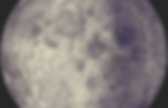

#vcloude □□□□□□□□□□□#moon #az365 #ArizoNa... #vcloude □□□□□□□□□□□#moon #az365 #ArizoNa... #vcloude □□□□□□□□□□□#moon #az365 #ArizoNa... #vcloude □□□□□□□□□□□#moon #az365 #ArizoNa... #vcloude □□□□□□□□□□□#moon #az365 #ArizoNa... #vcloude □□□□□□□□□□□#moon #az365 #ArizoNa... #vcloude □□□□□□□□□□□#moon #az365 #ArizoNa... #vcloude □□□□□□□□□□□#moon #az365 #ArizoNa... Moon. iGoogle: Get Current Moon Phase on your Google homepage. Moon. The Moon is in synchronous rotation with Earth, always showing the same face with its near side marked by dark volcanic maria that fill between the bright ancient crustal highlands and the prominent impact craters. It is the second-brightest regularly visible celestial object in Earth's sky (after the Sun), as measured by illuminance on the surface of Earth.
Although it can appear a very bright white, its surface is actually dark, with a reflectance just slightly higher than that of worn asphalt. Its prominence in the sky and its regular cycle of phases have, since ancient times, made the Moon an important cultural influence on language, calendars, art, and mythology. The Moon's gravitational influence produces the ocean tides and the slight lengthening of the day. The Moon is thought to have formed nearly 4.5 billion years ago, not long after Earth. As of November 2014[update], the Moon is the only celestial body other than Earth on which humans have set foot. Name and etymology. The Moon l Phases, Orbit and distance from the Earth. The Moon is the only natural satellite of Earth: orbit: 384,400 km from Earth diameter: 3476 kmmass: 7.35e22 kg History of The Moon Called Luna by the Romans, Selene and Artemis by the Greeks, and many other names in other mythologies. The Moon, of course, has been known since prehistoric times.
It is the second brightest object in the sky after the Sun. As the Moon orbits around the Earth once per month, the angle between the Earth, the Moon and the Sun changes; we see this as the cycle of the Moon's phases. Due to its size and composition, the Moon is sometimes classified as a terrestrial "planet" along with Mercury, Venus, Earth and Mars. The Moon was first visited by the Soviet spacecraft Luna 2 in 1959. The gravitational forces between the Earth and the Moon cause some interesting effects. But the Earth is not completely fluid, either. The Moon has no atmosphere. A total of 382 kg of rock samples were returned to the Earth by the Apollo and Luna programs. More about the Moon Open Issues. Moon Phases :: Calendars. Moon Phases Free Daily Moon Phases Website Module Software for Past & Future Moon Phases The free moon module shown above is pretty useful. But if you'd like additional features like monthly calendars, upcoming full moon / new moon info, and other details, you will need dedicated moon software.
I recommend trying a copy of QuickPhase Pro for use anytime on your personal computer. I created it, so I couldn't be biased :-) ... but it's a big time-saver if you're looking at the moon phases regularly. Here are a few core features: detail on current moon phases, like full moon percentage, when the next new or full moon is, etc thousands of years of past and future moon phases calendars, so you can: find past moon phases back to 0AD find future moon phases to the year 4999 Mobile App for Moon and Sun If you'd like to have the moon at your fingertips inside your iPhone or Android device ... you need to check out Luna Solaria. It provides moon AND sun information in a beautiful, simple interface.
Paul Carlisle's Home Page. <center><span><b>Note: you seem to have JavaScript disabled. This page requires it to be enabled for full functionality. </b></span></center> Currently, I am Research Scientist at ERIM International in Ann Arbor, Michigan. We do an awful lot of interesting stuff at ERIM, from radar systems development to satellite imaging, physics-based computer modeling and image analysis. I recently graduated from the University of Michigan - Dearborn, majoring in Computer Science with a minor in Mathematics.
Prior to obtaining my Computer Science degree, most of my working life was spent in the printing industry, doing everything from business forms to high speed photocopying to four-color process work, with some typesetting and image processing thrown in along the way. Some of my other interest include physics, cooking, fossil collecting, astronomy, and classical music; I actually got to perform with the Met once when they came to Detroit (well, OK, I was a supernumerary, but it was still fun). Www.noao.edu/image_gallery/images/d3/FullMoon.jpg. Moon Information Resource And Guide. Moon (film) Moon is a 2009 British science fiction drama film co-written and directed by Duncan Jones. The film follows Sam Bell (Sam Rockwell), a man who experiences a personal crisis as he nears the end of a three-year solitary stint mining helium-3 on the far side of the Moon. It was the feature debut of director Duncan Jones. Kevin Spacey voices Sam's robot companion, GERTY. Moon premiered at the 2009 Sundance Film Festival and was released in select cinemas in New York and Los Angeles on 12 June 2009.
The release was expanded to additional theatres in the United States and Toronto on both 3 and 10 July and to the United Kingdom on 17 July. In 2035, Lunar Industries have made a fortune after an oil crisis by building a large, automated lunar mining base on the Moon, called Sarang, and have been extracting a large amount of helium-3 back to Earth.
Sam Bell, Lunar Industries astronaut and Sarang operator, nears the end of a three-year work contract as the sole resident at Sarang.